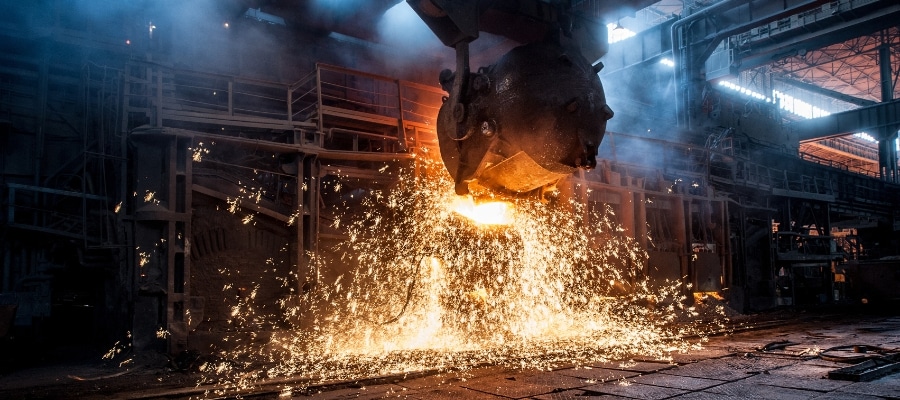Thermal coal companies with expansion plans surged in 2023 (+18%). This data is derived from the latest update of the Global Coal Exit List (GCEL) featuring 1,400 companies involved in the thermal coal industry (1). It highlights the sector’s inertia as it struggles to align with the transition. 40% of the GCEL companies are still developing new thermal coal mines, power and infrastructure projects with the backing of financial institutions. Yet, most of these institutions do not use their influence to condition their services to the end of new coal projects and require them to adopt an exit plan aligned with the goal of limiting global warming at 1.5ºC.
Coal expansion plans face little restrictions from financial institutions
In its Net Zero Emission scenario to limit global warming to 1.5°C, the International Energy Agency (IAE) indicates to close coal assets by 2030 in the OECD and Europe and 2040 in the rest of the world (2). Yet, expansion plans of coal companies show no signs of slowing down (3). In the mining sector, companies aim to expand thermal coal capacity to 2.5 billion tons per year, the equivalent of 35% of the world’s current production. In the power sector, companies plan to develop an additional 516 GW of coal power capacity. This represents 25% of the current global capacity. The trajectory is progressing at two different speeds: one for Asia and the other for the rest of the world (4).
Financial institutions from around the world provide companies with the financial support needed to bring these projects to life. Today, among the 268 top financial institutions that have adopted a thermal coal policy, only 34% of them exclude at least some coal developers (5). Adopting a policy that excludes companies with thermal coal expansion plans is a step forward; however, it is crucial to use the right definition to have a meaningful impact. Despite the availability of exhaustive definitions for companies with expansion plans, such as the one provided by the GCEL, some financial institutions persist in funding them with a less comprehensive definition (6).
Zoom on GLENCORE
Glencore, a Swiss company, is ranked as the 4th largest global thermal coal mining developer with 8 mining projects and extensions with a planned total capacity of more than 63 million tons per year. Nevertheless, it remains in the portfolios of many financial institutions.
Among the top ten investors in Glencore, BlackRock claimed the first position with US$5,437 million (7). The world’s largest investor has a coal policy but very weak criteria, allowing highly diversified companies like Glencore to slip through the cracks (8).
In the 9th position, French asset manager Natixis IM (NIM) held Glencore’s bonds and shares worth US$1,003 million (9). This is still possible because some of NIM’s affiliates, such as Loomis Sayles, have not yet implemented a thermal coal policy.
Only a handful of coal exit plans: financial institutions must step-in
In order to successfully phase-out the coal sector entirely by the 2030/2040 timeline, coal companies must establish robust exit plans today. Only 71 companies (5% of the GCEL) have set an end date for their coal-related activities.
Even when such plans exist, they have numerous flaws that undermine their robustness, including setting end dates beyond the 1.5°C-consistent planning of the IEA or switching from one fossil fuel to another (10). For instance, RWE AG has the right exit date and asset-by-asset closure dates, but will build 3 GW of new gas power capacity on retired coal plant locations and plans to convert their Dutch coal assets to biomass. Even worse, KEPCO’s plan sets a coal exit date in 2050, with the majority of their assets either being sold or replaced by LNG-fired power plants.
The financial sector is not using its potential to drive a responsible exit from the sector. Although 89 financial institutions have committed to exiting coal by the above-mentioned deadlines, only 24 strictly require that their remaining portfolio clients adopt a coal exit plan.
Some coal policies include:
- The demand for a coal exit plan aligned with the 2030/2040 timeline, such as DWS or HSBC,
- Several financial institutions go further by conditioning financial support to a coal exit plan aligned with the 2030/2040 timeline, such as Unicredit or Nordea,
- Some have robust practices by conditioning support to a coal exit plan aligned with the 2030/2040 timeline with a detailed closure plan for each asset, like Credit Mutuel and Credit Mutuel AM or La Banque Postale.
Along with these above-mentioned demands, financial institutions should also require that the coal exit plans include no conversion to gas or biomass plants and feature transition plans that consider workers and environment affected by the closures.
Today, over 270 financial institutions use the GCEL to screen their portfolio and extract specific data points. Financial institutions need to go further: Reclaim Finance recommends that they use the GCEL as a basis for shaping their policies, as more than 50 financial institutions have already done. The database is a powerful tool for implementing robust policies, able to tackle coal expansion and facilitate the closure of existing assets. Already endorsed by the International Financial Corporation and used by regulators, particularly in France, the GCEL is also an instrument for mitigating financial risks associated with coal and ensuring the transparency of financial institutions’ climate communications to prevent greenwashing.



